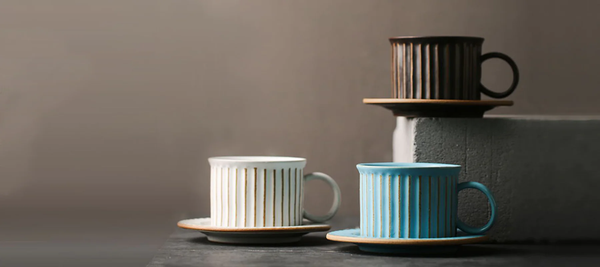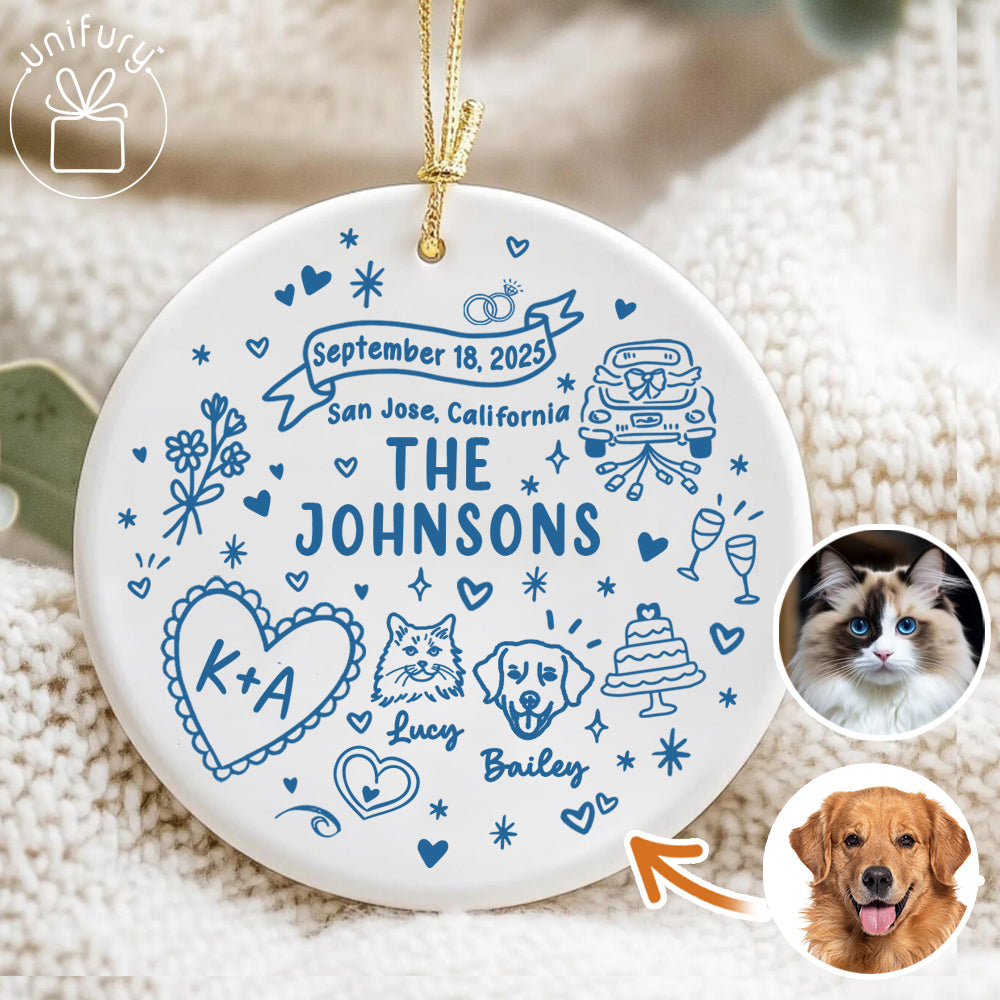
Coffee cups specifically serve for drinking coffee and coffee products, and is usually smaller than a teacup. Coffee mugs's material is usually ceramics, porcelain, glass, or other common materials. Coffee cups are usually each size and shape to hold different types of coffee and often have handles for easy gripping.
Originating in the Middle East in the 15th century, the first coffee cups were handle-less, resembling teacups. As coffee spread to Europe, coffeehouses emerged as intellectual hubs, spurring the creation of specialized coffee cups. The Industrial Revolution later mass-produced these cups, introducing handles to prevent burns.
Today, coffee cups are not just functional; they're artistic statements and personal tokens. From the traditional to the innovative, these coffee cups come in forms like the classic coffee cup, travel mugs, and the petite Demitasse. Materials have diversified too, with options like stainless steel and silicone catering to varied preferences.
This article delves into the fascinating world of coffee cups, exploring their history, diverse types, materials, and usages.
What is the history of Coffee cups?
The first coffee cups originated in the Middle East in the 15th century. These cups, crafted from ceramic and porcelain, lacked handles and shared a similar shape to tea cups.
In the 17th century, as coffee found its way into Europe, coffeehouses became a gathering place for intellectuals and famous people. The demand for coffee is popular. From there, European artisans began designing specialized cups to enhance the coffee-drinking experience.
Then in the 18th century, the Industrial Revolution brought advances in ceramic production. Coffee cups are mass-produced, affordable, and more accessible to users. This period also marked the birth of coffee cups with handles that served the purpose of enjoying coffee without burning your hands.
By now, in the 21st century as coffee culture continues to develop, creativity and innovation in coffee cup design is also becoming more and more diverse. Coffee cups today are not only for drinking coffee but also unique works of art. Custom-designed mugs as gifts, expressing personal preferences, and sending personalized messages are becoming popular. Also, the use of diverse materials such as stainless steel, glass, or silicone has brought richer choices to consumers, suitable for all ages, preferences, and personal styles.

The first coffee cup originated in the Middle East in the 15th century
What are the different types of coffee cups?
There are many different types of coffee cups designed to serve multiple needs and types of coffee like classic coffee cup, travel coffee cup, Demitasse cup or Cappuccino cup. Below is a popular coffee cup classified based on intended use and construction material:
Classic coffee cup
Classic coffee cup is the most popular and iconic type of mug when it comes to coffee cups. The large cylindrical cup with a handle is perfect for large portions of coffee. It is usually made from porcelain, have a simple design, and have high heat capacity but are quite fragile. That is also the reason why people often see this type of cup used at home or in the office rather than in coffee shops.

The classic coffee cup
The Travel coffee cup
The Travel coffee cup is a portable mug with a lid,designed for comfortable hold, making it the perfect travel companion. Travel mug is typically made of stainless steel or plastic and come in a variety of sizes. Its biggest advantage is that it keeps hot and cold well and is quite environmentally friendly.

The travel coffee cup
The Demitasse cup
The Demitasse cup, also known as espresso cups, are the smallest of all coffee cups. Its design features a narrower base and a wider rim. Espresso cups are commonly used to serve concentrated coffee drinks: espresso, ristretto, lungo, Turkish coffee, and espresso macchiato. Demitasse mugs are not just a cup of coffee, it also symbolizes Italy's long coffee tradition.

The Demitasse Coffee Cup
The Cappuccino cup
Cappuccino coffee cup is for enhancing the user's coffee enjoyment experience. Narrow at the bottom and wide in the middle, the cup's generous size provides the perfect space for elaborate coffee cup decorations, including intricate foam latte art.

The Cappuccino cup
Latte glass
Latte glass is practical and optimal in design. It's tall and slim shape allows baristas to create exquisite works of latte art, adding visual appeal to your drinks. With thick material and a handle design, people can comfortably enjoy hot drinks without worrying about burning their hands.

The Latte Glass
What are coffee cup sizes?
Coffee cup sizes cater to a range of preferences and coffee types, each thoughtfully designed for a specific coffee drinking experience. The Small Cup (4oz/120ml) is ideal for concentrated coffees like espressos, perfect for those who savor strong flavors in small quantities. The Medium Cup (8oz/240ml) is versatile, great for black coffee or cappuccino, offering a balanced caffeine portion. The Large Cup (12oz/355ml) suits milk-based coffees like lattes or mochas, blending bold coffee with smooth milk. The Extra Large Cup (16oz/475ml) is tailored for iced coffees, providing ample space for ice and creative toppings for a refreshing experience.
Small Cup (4oz / 120 milliliters)
Small Cup is often referred to as the smallest size. It is suitable for drinks such as espressos, cortados, and other concentrated coffees. With a small capacity, this is an ideal design for those who like to sip and enjoy strong coffee.

The small coffee cup can hold 120 milliliters of liquid
Medium Cup (8oz / 240 milliliters)
Medium Cup is suitable for many types of coffee. Especially black coffee or cappuccino. This is a safe choice for those who don't want too much caffeine, it gives you just enough coffee to satisfy but not so strong that it makes you insomnia.
Large Cup (12oz / 355 milliliters)
Large Cup is perfect for dairy-based dishes, such as lattes or mochas. Allows users to enjoy the unique flavor of the blend of coffee and milk, bold yet smooth in taste.

The large coffee cup can hold 355 milliliters of liquid
Extra Large Cup (16oz / 475 milliliters)
The extra large cup size is optimally designed to accommodate a lot of ice while still leaving ample space for coffee, ensuring users a refreshing and cool experience. Besides, the biggest advantage of this type of cup is that users can mix as many toppings as they want without worrying about overflowing, satisfying the creativity in each cup of coffee.

The extra large coffee cup can hold 475 milliliters of liquid
What are coffee cups made of?
Coffee cups come in different materials, from ceramics, porcelain, glass, stainless steel, melamine to plastic. Ceramics and porcelain are popular for their heat retention and elegance. Glass cups bring visual appeal, and stainless steel offers durability and insulation. Manufacturers also use melamine and plastic, especially for casual or travel-friendly cups.
Ceramic
It is the national ingredient when mentioning coffee cups - Ceramic. Ceramic coffee cups the optimal choice for most users with a simple and popular design. The biggest advantage of this type of cup is its ability to retain heat well, be durable, and not break easily. Furthermore, the ceramic coffee cup allows coffee-holic to use it in both the microwave and dishwasher, providing great flexibility.

The ceramic coffee cup
Melamine
Melamine is an excellent material for making coffee cups. Melamine coffee cups are famous for their sturdiness and are difficult to chip or break. An interesting thing is that the melamine cups are very well insulated, so when holding a hot drink you will not feel the heat. Melamine coffe cups have optimal design for washing and using. The only drawback of the melamine cups is that they consist of melamine plastic, making it unsuitable for use in the microwave.

The Melamine Coffee Cup
Glass
Renowned following ceramic coffee cups, glass cups promise a delightful experience for coffee lovers. With a transparent design, glass coffee cups allow users to admire their drinks in the most vivid and authentic way. One of the drawbacks that users may think about when choosing a glass cup is that it is quite fragile. Users must be tender care when using them to avoid chipping them.

Stainless Steel
Stainless Steel cup allows you to enjoy the flavor of your drink to the fullest and also as a travel cup, keeping drinks hot or cold for up to 4 to 20 hours (depending on the type of drink) with its great stainless steel design.

The Stainless Steel coffee cup
👍 Explore more: What are the Best Mug Materials? Discover the Top Choices for Your Coffee.
What are the Environmental issues with disposable cups?
Disposable cups are cups that provide convenience. They are often used in restaurants, cafes, or on trips and picnics. Disposable cups are usually made from paper, plastic, bamboo, or bagasse. As mentioned, these cups are specifically designed for business or personal use for convenience and does not require cleaning. However disposable cups cause more environmental issues than we think.
Waste generation
In fact, disposable cups create a huge amount of waste. According to statistics, The paper and plastic cups, forks, and spoons disposed of annually could stretch 300 laps around the equator. Studies consistently show that millions of tons of disposable cups are thrown away every day without proper disposal. That contributes to plastic waste and causes environmental pollution.
Fuel and Resource consumption
Producing disposable cups consumes large amounts of energy and resources including water, oil, and trees. The increasing demand for convenient cups will lead to deforestation, climate change, and the greenhouse effect.

Producing disposable cups consumes large amounts of energy and resources
Carbon Footprint
A 2017 report from the UK's Environmental Audit Committee found that coffee cups sent to landfill in the UK create annual carbon emissions equivalent to more than 152,000 tonnes of carbon dioxide, equal to the amount of emissions that 33,300 cars create in a year. That proves that the production, transportation, and disposal of disposable coffee cups in particular, and disposable items in general, contribute to aggravating air pollution. Increases greenhouse gas emissions leading to climate change.

Plastic cups can produce a lot of CO2 gas
Conclusion
Through the article, we have discovered interesting things about coffee cups. Along with the development of humanity, coffee cups have also developed significantly over time. From traditional ceramic mugs to modern thermos mugs, the history of coffee cups has woven a tapestry of adaptation and innovation. Although this innovation brings people convenience and comfort, it also brings some harm to the environment. By clearly understanding the history, materials, and uses of the above cups, we hope this guide will help you make wise decisions when choosing coffee cups, contributing to your experience of attractive and sustainable coffee for yourself and the environment.
Explore more:
👍 Teacups - History, Types, Materials And Usages
👍 Mugs vs Cups: Choosing the Right Drinkware for Your Daily Brew.


















Leave a comment